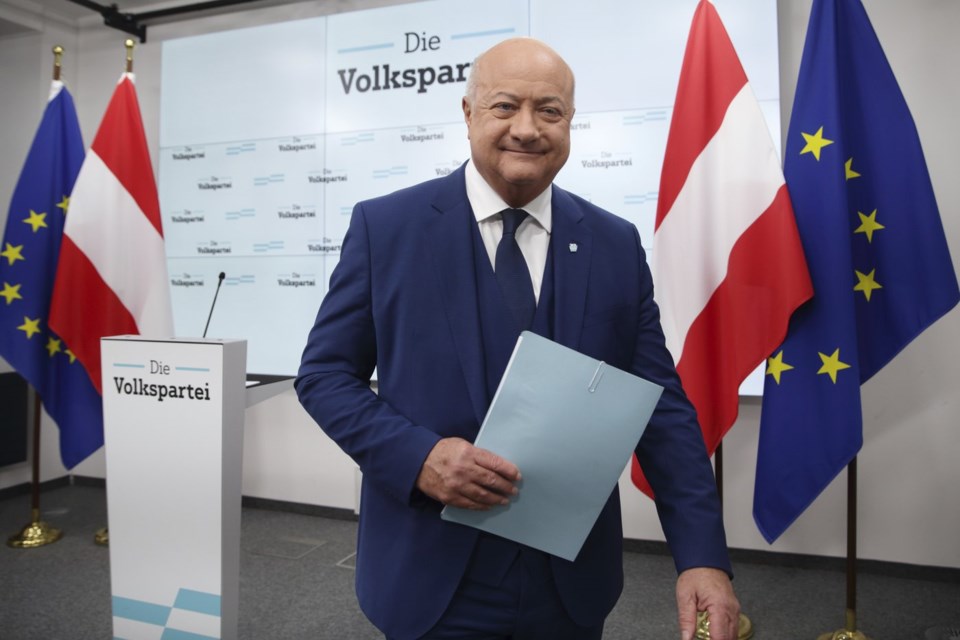VIENNA (AP) — Three parties announced Thursday that they have reached a deal to form a new centrist Austrian government, five months after an election was won by a far-right party that later failed in an attempt to form an administration.
A statement from the conservative Austrian People's Party, the center-left Social Democrats and the liberal Neos said they agreed on a program for a coalition after the longest post-election hiatus in post-World War II Austria.
The country's politicians broke a record of 129 days to form a new government that dated back to 1962.
New People's Party leader Christian Stocker is expected to become chancellor. The parties planned to present their program later Thursday.
This was the second attempt by the three mainstream parties to form a new government without the far-right, anti-immigration and euroskeptic Freedom Party, which in Austria’s Sept. 29 election emerged for the first time as the strongest political force. It took 28.8% of the vote.
Their first effort collapsed in early January, prompting the resignation of conservative then-Chancellor Karl Nehammer — and setting the scene for Austria’s president to ask Freedom Party leader Herbert Kickl to try to form a government.
Kickl’s own attempt to put together a coalition with the People’s Party, which finished second in the election, collapsed in mutual recriminations on Feb. 12. The mainstream parties, which faced the risk of a new election that was unlikely to do them any favors, resumed their effort to find common ground.
The outgoing government, a coalition of the People’s Party and environmentalist Greens now led by interim Chancellor Alexander Schallenberg, has remained in place on a caretaker basis since the election.
The People’s Party and Social Democrats often governed Austria together in the past but have the barest possible majority in the parliament elected in September, with a combined 92 of the 183 seats.
That was widely considered too small a cushion, and the two parties sought to bring in Neos, which has 18 seats and hasn’t previously joined a national government.
The Associated Press


